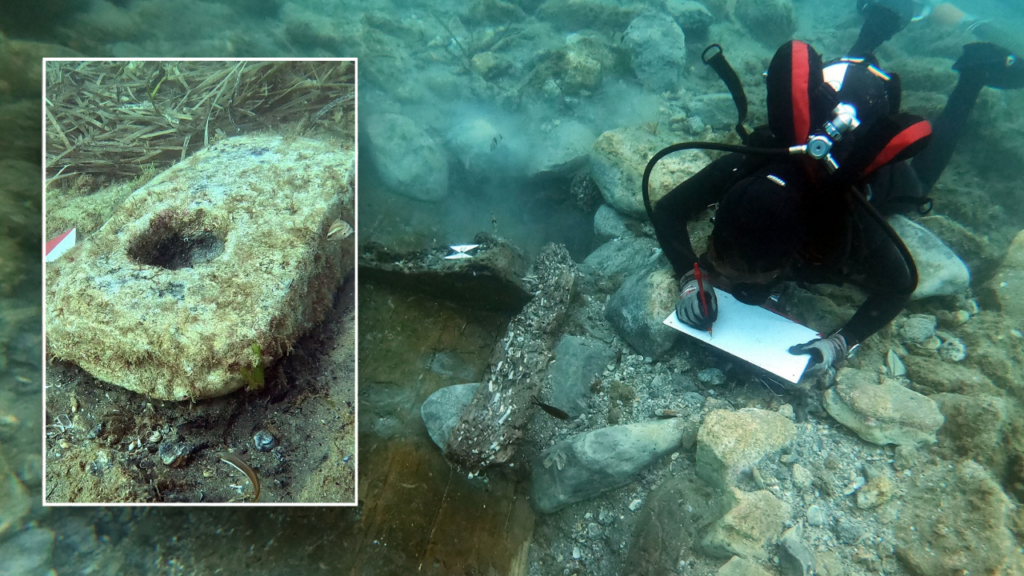Recent archaeological pursuits off the southeastern coast of Sicily have unearthed remarkable artifacts from a shipwreck that dates back approximately 2,500 years. The discovery was made by the Superintendence of the Sea (SopMare), an organization dedicated to the protection and preservation of ancient maritime artifacts. The findings were made public on December 9, following a thorough underwater excavation carried out in collaboration with the University of Udine and the Italian Coast Guard, which provided vital logistical assistance throughout the operation.
The shipwreck, believed to be from the fifth or sixth century B.C., was found resting at a depth of six meters, or roughly 19.5 feet, buried under layers of sand and rocks near the city of Ragusa. The excavation lasted three weeks, concluding in September, and yielded significant archaeological insights into maritime practices of the era. In their official statement, SopMare described the hull of the ship as being constructed using the “on the shell” technique, which involved connecting beam boards with tenons and mortise fittings, creating a robust and self-supporting vessel structure.
In addition to the ship itself, the excavation revealed a trove of prehistoric stone tools, known as lithics, and several anchors from a later period. Specifically, SopMare indicated that two iron anchors, characterized as type ‘T’ toppled, were uncovered alongside four lithic artifacts believed to date back to the prehistoric era. The combination of these finds not only enriches our understanding of ancient shipbuilding methods but also strengthens the narrative of trade networks that existed between ancient Greece and Sicily, as indicated by the mixture of artifacts from different periods.
Moreover, underwater photogrammetry performed during the excavation allowed for the creation of a three-dimensional model of the wreck site, enhancing both the documentation and analysis of the findings. The collected samples are slated for further paleobotanic analysis, which could provide additional insights into the materials and construction techniques used in ancient maritime contexts.
This recent discovery is part of a wider trend of archaeological underwater explorations off the Italian and Greek coasts, which often uncover remnants of ancient trade routes and maritime history. Just months prior, SopMare had announced the finding of an intriguing artifact initially misidentified as a ‘strange rock’ that turned out to be a centuries-old helmet, likely crafted between the late 1400s and 1600s. This helmet, too, was located underwater — about 16 feet deep in the Ionian Sea close to the Vendicari Nature Reserve, underscoring the rich and layered history of the region’s maritime narrative.
This series of discoveries not only highlights the contributions of organizations like SopMare and academic institutions like the University of Udine but also reminds us of the intricate tapestry of human history that lies beneath the surface of our oceans. With ongoing excavations and studies, the potential for uncovering even more significant artifacts from the depths of the Mediterranean remains high, continuing the journey into our collective past.
For those who are keen to explore more stories and updates from the realms of lifestyle and archaeology, Fox News Digital and Fox Business offer a wider array of articles that cater to such interests. The ongoing partnership between researchers and local authorities enhances our understanding of historical contexts and encourages public engagement with archaeology.
Andrea Margolis, a noted writer for Fox News Digital, invites readers to share their story tips and thoughts on these fascinating discoveries, furthering the dialogue surrounding our shared heritage. Readers can reach out via email at andrea.margolis@fox.com for any tips or inquiries they may have regarding this captivating field of study.



